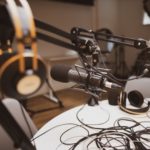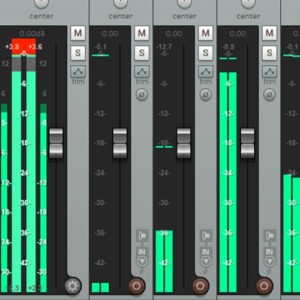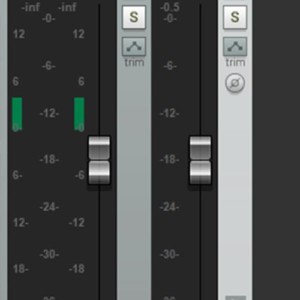Section Navigation
Introduction
Students will learn what podcasting is and how to create a podcast. By the end of the module students will have created a podcast to share knowledge on a topic they are passionate about.
Learning Goals
The learner will develop their oral and written communication skills by writing out a plan or script, then recording and editing their podcast.
Vocabulary
Podcast - an audio file used to share stories and/or information that is available through streaming or downloading.
Audacity - a free audio editing software.
MP3 - audio file format.
Guiding Questions
What are some of the ways that you can share information? How are stories used to teach children lessons?
Curriculum Links
Students will be writing out the general plan for their podcast. They should list questions they have about their topic and do research to have detailed and accurate information. After gathering knowledge on their topic, they will need to plan out the podcast and how the recording is going to go. Students will then record their podcast. This links to oral and written communication skills. Topics could also be selected to relate to specific subject and curriculum expectations.
Materials
- Microphone
- Audacity
- Paper and pencil
- Headphones
Non-Computer Activity
Have everyone sit in a circle and have a few volunteers share a story they were told as children. This could be a traditional story, myth, legend or a classic children’s story. After a few stories have been shared, discuss the importance of oral storytelling. Knowledge can be passed along orally and used to teach lessons, share important information and more. Podcasting can be used as a modern way to share oral histories and preserve traditional knowledge.
Computer Activity
If possible, have a local knowledge keeper or Elder come in to share traditional stories and knowledge. The information shared could be used to inspire the podcasts of the students. They could use the stories shared, and elaborate on what that story meant to them and/or share their own related story.
There could also be an opportunity to interview the knowledge keeper for a podcast if they are willing to participate and be recorded. Possible topics could be sharing a traditional story you were told as a child and explaining what you thought of it, discussing what your community or home is like and what that means to you or discussing the importance of a topic you are passionate about.
Planning
Students will examine the format of a podcast and plan out their recording before they can move on to the recording process. The typical format of a podcast is below. Students can follow this format or something similar.
Podcasting format
Opening: a sound effect, jingle, or combination thereof.
Introduction: Introduce yourself and your co-hosts. Introduce your topic and what you will be talking about.
Transition: You will need to transition from your Introduction to your topic. This transition could be done with a verbal segue or a sound effect.
Topic: Discuss your topic and how you will tell the story in your podcast. You may want to organize it into three sections of subtopics. Transitions could be included to help go from one topic to another.
Closing remarks: End your podcast by thanking your listeners and wrapping up your topic. If you plan to continue creating podcasts you could mention what will be on the next podcast.
Closing: Add a jingle or sound effect that fades out at the end of the podcast.
When planning on podcasting, you can create a script, an outline, and/or list of questions, depending on what type of podcast you are creating. If you make a script, it is not a problem if you deviate from it as long as you cover the information you intend to convey.. It can also be helpful to make an outline, or list of things you want to mention on your podcast.
If you are interviewing someone you will want to have your list of questions prepared and possible follow up questions for their answers. Discuss the length of your podcast. Learning to tell a story in a set time length can be a challenge, consider who your audience and how you can tell your story within a set time frame. Once the podcast is planned out the instructor will give permission to move on to the recording stage of the activity.
Recording
When recording your podcast, find a quiet space where you won’t be interrupted. Test your microphone by recording a short clip and listening to it. You will also want to have your podcast plan nearby to reference. If you mispronounce something just pause and try again. Mistakes can be edited out. Remember to speak slowly and use short concise sentences. Take pauses between sections of content where you plan to add a sound effect.
If you are unfamiliar with the Audacity program it is recommended that you go through the Introduction to Audacity module.
Editing
After you have recorded your podcast, listen to it all the way through. After listening to it once go back and make edits as needed. This will be the time where you can add sound effects and jingles.
Sharing
Once you are happy with your edits and are finished your podcast, you can save and export your file. Once the file is exported as an MP3 you can share it with the class and externally as you wish.
Conclusion
Everyone should listen to a few of their classmates’ podcasts and provide constructive feedback. After everyone has had time to discuss the podcasts, get them to sit in a circle. The goal is to go around in a circle to tell a story as a group. Each person can say one word before it moves onto the next person. Once the story has come to an end you can repeat the activity giving everyone a chance to say 2-5 words to create the story. Was there a difference between the two stories? How did having more words to use give you more control over the narrative?
Resources
- How to Record and Edit a Podcast in Audacity is a youtube video that teaches the process of creating a podcast with Audacity.
- Inuit Mythology is a game created by Pinnguaq employee Tali Metuq. This game showcase Inuit myths and how they are used to teach children lessons.
- Sesqui is an immersive showcasing of Canada that uses 360° videos. There is a huge connection to storytelling that encourages students to use their own stories and perspectives.
- The University of British Columbia Arts Department has an article about oral traditions and the importance of oral histories in Indigenous cultures.
- Media Indigena has a post that lists Indigenous podcast. This list is frequently updated to include new podcasters.
- Voices has a blog on planning podcasts that gives good examples of scripts and formats.




